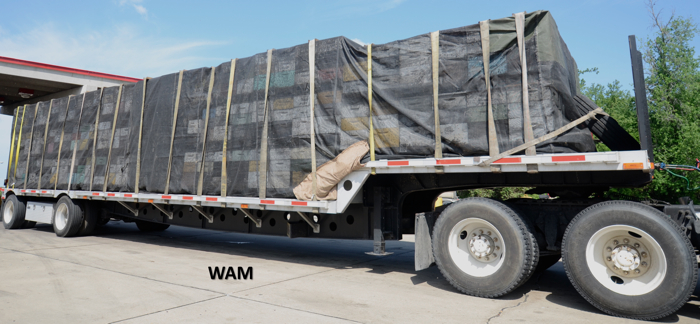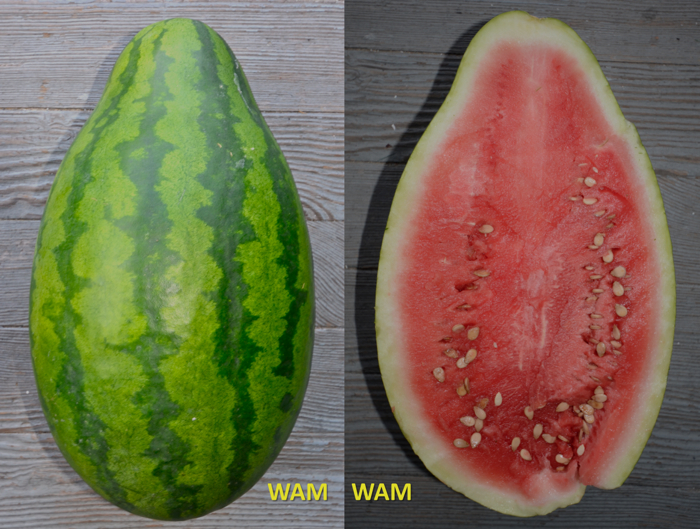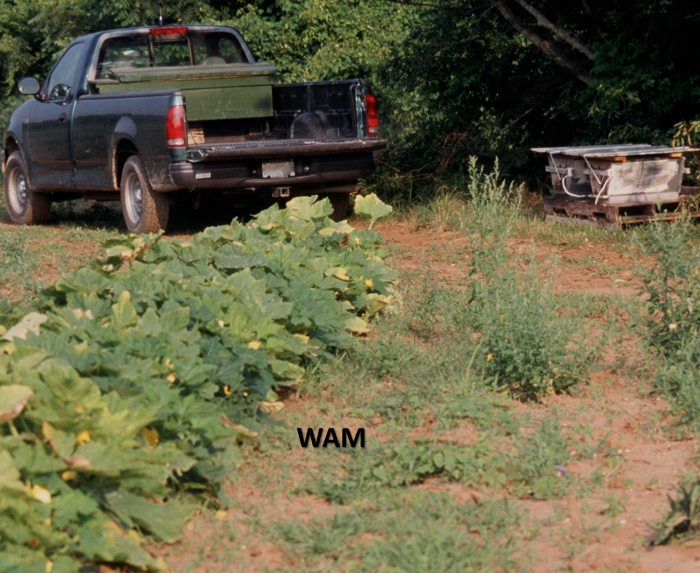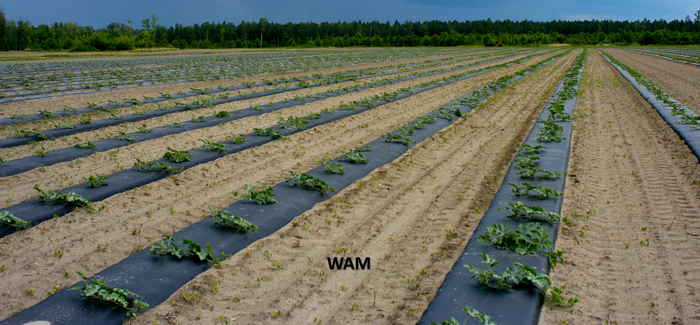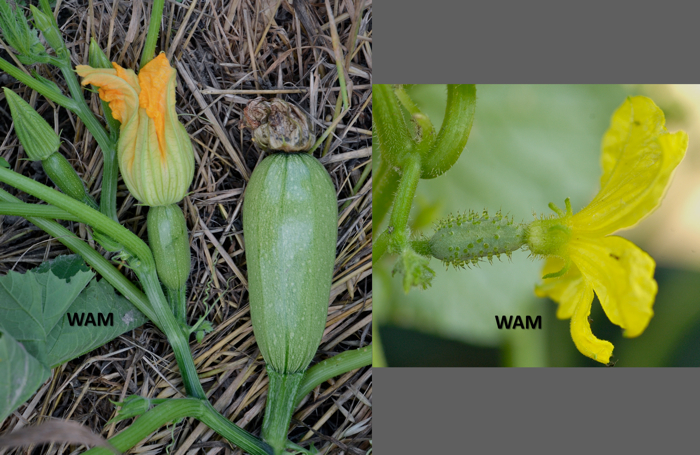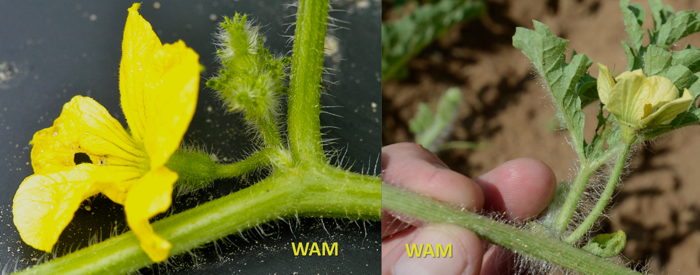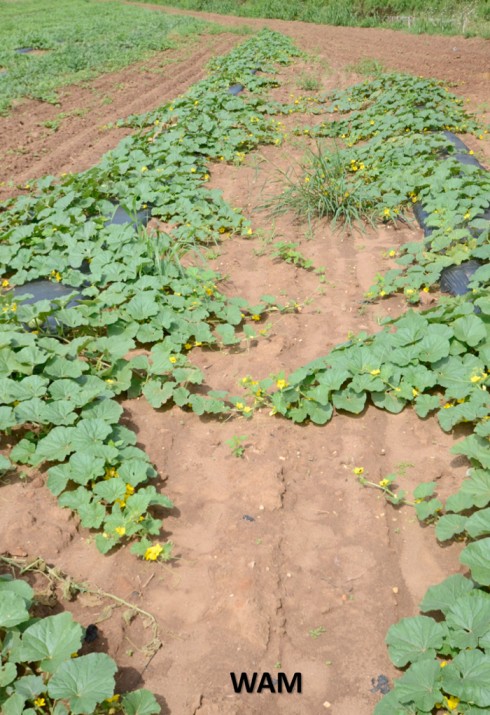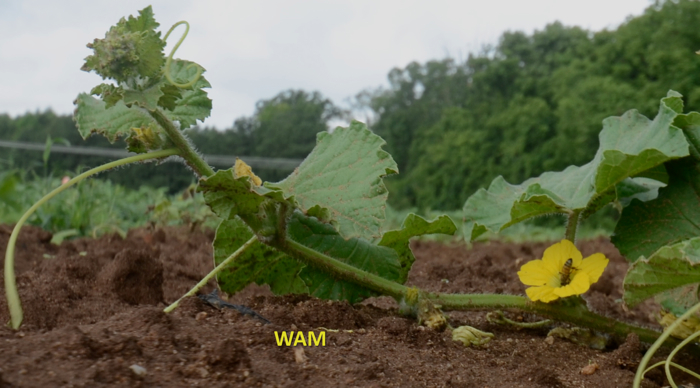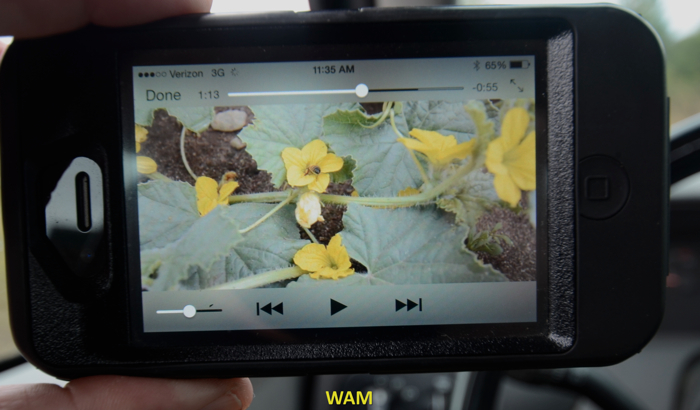Honey Bee Pollination
Honey Bee Pollination in U. S. Agriculture
This section is an extension of my December 2014 Honey Bee Biology column article published in the American Bee Journal. The topic was pollination. Some readers will find this page without seeing that column article. So I am including a summary of pollination and some additional photographs. Links to the Movie clips of the individual bees pollinating cantaloupe flowers are below.
Pollination Importance
Most people associate bees with honey. However in United States agriculture, bees are most valuable as pollinators. Honey bee pollination was estimated as $14.6 billion based on an estimate in the year 2000 (Morse and Calderone, 2000). That number is huge compared to U.S. honey production valued on the order of $200 million. As far back as 1976, S. E. McGregor estimated that one third of our diet depends, directly or indirectly, on insect pollination (McGregor, 1976). The majority of that pollination would be done by honey bees and other bees like bumble bees and native bees (solitary bees). For large-scale crop pollination, honey bee colonies (hives) are often transported long distances by tractor trailer. For example, beekeepers move hives to pollinate almonds in California, apples in Washington, and blueberries in Maine, to name just a few of the many crops. Below is a picture of a trailer with a load of hives. The hives are under a net to keep the bees on board and strapped down for security. If you see these trucks on the interstate, remember much of our food supply depends on them.
Pollination Definition
Pollination is the movement of pollen grains from the male flower parts (the anthers) to a special structure typically in the center of the flower with a sticky surface (the stigma) to receive incoming pollen. The two flower parts could be housed in the same flower or separated on different flowers. Pollination is different from fertilization, which is the union of the genetic material from the maternal and paternal plant(s).
Pollination Problem
The fruit or vegetable we eat grows in response to fertilized seeds from pollination. If bees were lacking, and the plants had proper irrigation, fertilizer applications etc., then poor pollination can produce, for example, the watermelon shown below. The left picture shows the watermelon with an undersized neck (near the stem). The picture on the right shows same watermelon cut open. The lack of robust seed formation, most likely from poor pollination, reduced the growth. The red tissue grows and the sweetness occurs because of the seeds, whose formation depends on pollination.
Bee Pollination for Vine Crops
Beekeepers, especially when renting colonies for crop pollination, should know the basic biology of the crops their bees are pollinating. I advised that in the pollination chapter of my top-bar hive beekeeping book. If there is ever a problem, a well-informed beekeeper is better equipped to deal with it. Once I had farmer complain my bees were not working in his cucumber flowers. He was walking the fields in the afternoon. At the wrong time. The bees work the flowers in the morning, I told him. The next morning, he found bees. Below is a picture of my top-bar hives pollinating squash plants, seen to the left, and a large field of cantaloupes out of view.
Here is some basic biology of the vine crops. For cantaloupes, watermelons, cucumbers, squash, and gourds, etc., their female flowers typically open only once in the morning. In that brief time, the female flower needs several bee visits to receive enough pollen to completely pollinate it. One bee coming to the flower is NOT enough to completely pollinate it. People usually find that fact surprising. As a rough estimate based on scientific research, I figure about 10 bee visits are needed to completely pollinate each female flower for the various vine crops. All those bee visits must happen during the one morning that the female flower is open. Timing is critical. And there can be numerous female flowers when a large field bursts into full bloom. Below, watermelons are growing from plastic-covered rows. At this time you can see how many plants are there. When they all grow longer, covering the ground in solid green, the critical pollination demand can be substantial, which is why the grower rents beehives.
Once I had a cucumber grower call me late in the season, all upset, wanting bees. His cucumbers started booming. I figured most of the first flowers were males, which was true, a typical pattern. I explained that and how to tell the gender of the flower, saving me a rushed trip to his farm. For vine crops, flower gender is easy to determine. The stem of the female flower bulges (its ovary) right behind the base of the petals. Sometimes the bulge looks like a miniature version of the cucumber, squash, gourd, etc. Below are some examples (green squash on left, cucumber on right).
The male flowers have only a simple slender stem at the base of the flower (no bulge). When the male flowers begin blooming first, that produces a supply of pollen in the field before the female blooms appear. Below are close-up examples of male flowers: cantaloupe (left) and watermelon (right).
Honey Bee Pollination Movie Clips
This brings us to the bee movie clips. I followed individual bees as they pollinated cantaloupe flowers. As we learned above, it takes more than one bee visit to a female flower to pollinate it completely. So when a bee stops at a flower, in most cases the pollination is not finished. I was renting the top-bar hives to a farmer ($60 per hive) in the field below.
While the bee flies from one flower to the next, I can only aim the camera at her from the side. I cannot look in a camera viewer, and the recording may occur low to the ground, which may look like this picture.
I would suggest watching these movie clips on at least a medium size screen, not a small mobile device. Although, I can still the bee on my iPhone, which was weird, ‘cause I was parked in one of my top-bar hive apiaries with thousands of bees flying all around the truck. And I was watching just one bee on my phone. And then I took a picture of that. A “selfie” of my one little working bee except I was holding the camera.
Anyway, when she appears on a larger computer screen, notice the bee usually cleans her tongue after she takes nectar from a flower, right before launching herself to the next bloom.
The sound is off with these movie clips because my microphones were just picking up the wind and my footfalls from behind. Bees are functionally deaf so welcome to their quiet world. Also on a few flowers, the bee will be out of focus briefly because of the camera’s auto-focus. I did not edit out those pieces because it breaks the continuous recording of a bee’s flight. Be patient for a few seconds and the auto-focus will catch its mistake and the focus will come back.
I am hoping these movie clips will also show the general public the reality of honey bee pollination from an individual bee’s perspective. Appreciate just how single-minded bees are when foraging. Watching the two- or three-minute movie clips can test one’s continuous concentration. If you want to see a longer flight, try my 16-minute long mini-movie. That is a “non-stop” continuous 16-minute chunk of a foraging flight. Not easy to record. Here are the links, which send you over to my YouTube site.
Following a honey bee for 2 minutes in a cantaloupe field.
Following a honey bee for 3 minutes in a cantaloupe field.
Following a honey bee for 16 minutes in a cantaloupe field.
References
McGregor SE, (1976) Insect Pollination of Cultivated Crop Plants Agriculture Handbook Number 496. Agriculture Research Service. United States Department of Agriculture. Washington, DC.
Morse RA, Calderone NW (2000) The value of honey bees as pollinators of U.S. crops in 2000. Bee Culture 128: 1–15.
